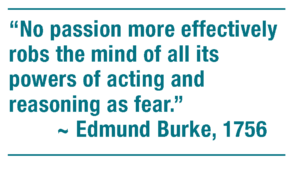In response to rising healthcare and absenteeism costs, employers and tech vendors emphasized wellness – keeping employees healthy and fit – concepts that spread to overall well-being, including financial, social, and psychological health.
The pandemic taught managers much about the importance of physical wellness in the workplace — including expanding “workplace” to mean wherever their employees work. Awareness of the dangers of “Presentism”— coming to the office while ill —was (and still is) exacerbated by the highly contagious nature of Covid. Yet employee fear of missing a workday persists, sometimes because of a deadline or workload issue, fear of managerial retaliation, or simply fear of missing out on a meeting or event. Thus, ailing employees may be present when they should be absent – if only for the welfare of others.
Beyond gym memberships and other wellness incentive programs, employers increasingly offer workshops or other programs to help employees with common money issues, such as debt, savings, retirement, and insurance. Sometimes guidance is provided for managing expenditures such as first-time home ownership, support for aging parents, or significant health costs. Employee Assistance Programs are widespread, aiding employees with areas of concern seen beyond the scope of HR in general while concealing employee issues from managers.
The Anxious Generation
Today’s workers at all levels are prone to anxiety, sometimes at many levels. Worrying about losing one’s job is high on employees’ lists of work-related issues, followed by money and family concerns, family health issues, etc. Anxiety levels are currently high as a volatile economy with tech companies, bank layoffs, and international and political strife produce increased apprehension.
But there is one area that we neglect to talk about: fear. Different from stress or even anxiety, fear is usually identifiable and discrete, unlike anxiety, which is more pervasive, unpredictable, and may be irrational. There is no such thing as “healthy fear.” (With the possible exception of fear of falling off in a high-rise construction site or getting electrocuted while maintaining electrical poles, where fear of injury may lead to better safety decisions.) The latter concerns are, as noted, discrete, identifiable, and apply only in certain situations. The fear dissipates with the task itself is finished. Fear, according to J. Gerald Suarez, Ph.D., is stimulus-bound, while anxiety is chronic and enduring.1 He concludes: “Fear can be to an organization what high blood pressure is to the human body: a silent killer.”
Safety – physical safety – has accelerated from anxiety to a valid fear. Workers at all levels may fear violence at work, arising from disgruntled employees, ex-employees, spouses, or some random intruder; parents have increased fear levels stemming from the increasing numbers of school shootings and gun-related deaths of children of all ages. Employees sitting at a desk, behind a cash register, or stocking shelves cannot do their best when wondering if a first grader will safely get off the school bus at the end of the day.
Employers — be they school districts or corporations, have a responsibility to make reasonable efforts to ensure the safety of their employees, customers, students, and other staff on their premises. However, such measures are unlikely to quell the fear issue in the short term.
Are Your Employees Afraid of Their Managers?
Rarely do we look at the fear factor in relation to manager/employee relations; how often have we in HR ever ascertained if people were in actual fear of those to whom they report? Managerial intimidation is hardly new, yet far too often, it needs to be recognized by those who could address it, and few have successfully managed the productivity ramifications of such fear. Indicators can include the following:
- Employees have been known to walk outside around an entire building to avoid walking by their manager’s office.
- Employees may flee to restrooms or pick up a non-ringing phone and talk into it to avoid eye contact or talking to managers.
- Many report feeling ill on Sunday evenings before the Monday morning return to work; some report breaking out in hives on the way to their jobs.
- Male and female employees both report crying at work after meetings with managers (that are not about performance reviews or getting fired.)
- Fear of reprisal or a negative performance review leads to a “please the boss at any cost” behavior, telling management only what the employee perceives it wants to hear.
- Fear of failure and reprisal leads to risk-aversion and apathy, causing a decrease in creativity and potential loss of innovation. In a fear-based environment, following rules and avoiding blame are employees’ top concerns.
- Fear of speaking up. Whether in meetings or one-on-ones, an employee who is ignored, talked over, or belittled learns not to respond or ask questions.
Korn Ferry reports that the largest source of stress for some 2,000 professionals was their managers. Their survey showed that 35 percent say their boss is their most significant source of stress at work, and 80 percent say a new boss or change in leadership in the organization adversely impacts their stress levels.2
While playground bullies pick on smaller or younger children, bullying bosses are not so discriminating, according to Dr. Harvey A. Hornstein, a retired professor from Teachers College at Columbia University and the author of ”Brutal Bosses and Their Prey.” He reports that managers bullied subordinates for the sheer pleasure of exercising power. The most common reason: ”It was a kind of low-grade sadism…they’d start on one person and then move on to someone else.” 3
Are Executives in Fear of Their Employees?
Fear in the workplace is not just the bailiwick of line employees. Case in point: facing corporate-wide layoffs, a company with an employee noted for his aggressive behavior moved the corporate executives and legal department to a second-story suite beyond a locked staircase in fear of a Rambo-esque response to his upcoming termination. This was almost thirty years ago before the concept of violence in the workplace, and employee retaliation was as common as we, unfortunately, see it today.
Other Fear Factors at Work
Factors other than managers cause fear at work: Korn Ferry lists the threat of losing a job to technology, the fear of change, and the pressure to learn new skills to stay employed as causes of stressful angst.4
Some employees fear math (yes, this is a thing) enough to avoid the analytics that we in HR think are so important today (this is rather like the test anxiety some people likely felt in college); many more, however, live in constant fear of losing their jobs and being unable to feed their children.
The Cost of Stressed Employees
Not surprisingly, fear and anxiety both lead to stress at work. The American Institute of Stress claims that 75% of doctor visits are stress-related, and more than 120,000 people die yearly from work-related stress.5 It doesn’t just affect individual health; Americans’ battle with stress amounts to a yearly healthcare cost of 190 billion dollars.6
Fewer than a quarter of workers report that their productivity is unaffected by stress: 42% say they lose 15-30 minutes per day in productivity, and 34% note they lose an hour or more a day due to stress.7
Conclusion
While addressing the fear factor at work may seem more elusive than implementing a stop-smoking campaign or an app that encourages employees to get up and move around during their day, neglecting it is costly. Sometimes anger management training helps middle-level managers better channel aggression that otherwise is hurled at their subordinates; sometimes, more subtle survey questions can ferret out employee fears, especially fears of managers or peer employees. What is most important as a first step for HR leaders is recognition of the issue and understanding of the ramifications of a fear-driven environment. While Niccolo Machiavelli thought it was better to be feared than loved, it is not a dictate that resonates well in today’s workplaces.
Endnotes
1 Managing Fear in the Workforce. Department of the Navy, Office of the Under Secretary of the Navy. J. Gerald Suarez. 1993, https://bit.ly/3QEUe84.
2 Workplace Stress Continues to Mount, https://bit.ly/444REvb.
3 Fear in the Workplace: The Bullying Boss By Benedict Carey. The New York Times, https://bit.ly/3DTmwEe
4 Korn Ferry. Op.Cit.
5 Studies Point to an Unlikely Antidote for Businesses Who Are Facing Quiet Quitting: Laughter and Appreciation. March 24th, 2023|Daily Life, https://bit.ly/3sdCsP5.
6 Stress and health disparities: Contexts, mechanisms, and interventions among racial/ethnic minority and low-socioeconomic status populations (apa.org) American Psychological Association Working Group Report On Stress And Health Disparities. 2017, https://bit.ly/456XvBb.
7 ComPsych StressPulse Report. www.compsych.com/resources




